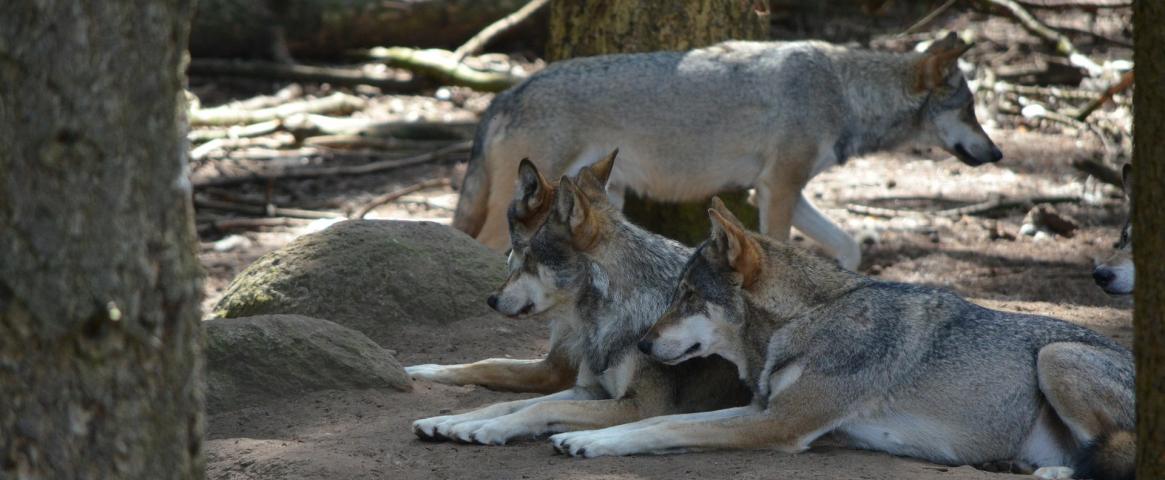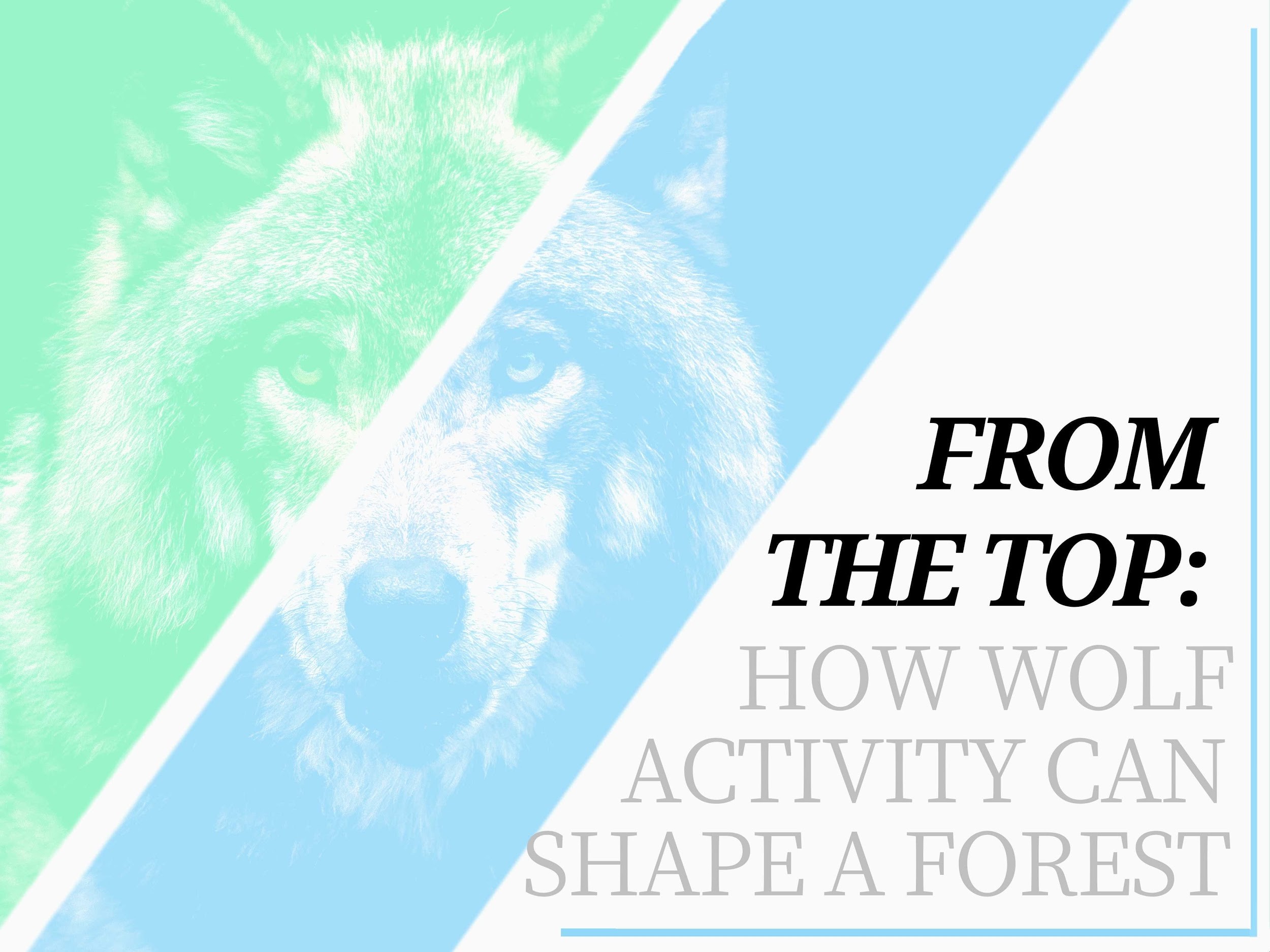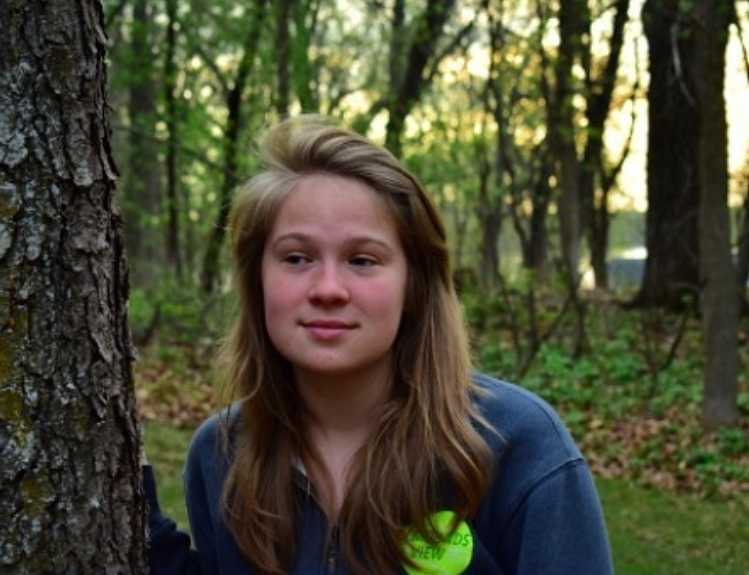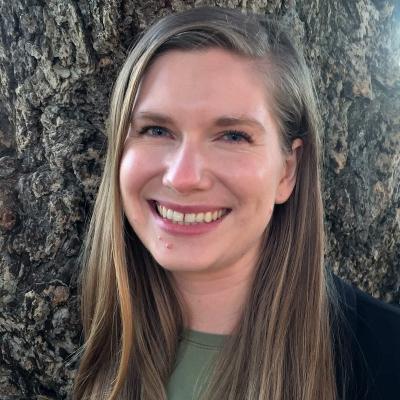By Mary Magnuson
In the natural world, everything is connected, from wolves at the top of the food chain to the towering plants that make up forests. But just how connected are they? To find out how top carnivores like wolves can affect coyotes, foxes, rodents and even the seeds these rodents eat, a team of University of Wisconsin-Madison ecologists embarked on a massive, multi-year field effort.
After a two-year-long study analyzing interactions within four “trophic levels” – the levels of a food chain ranging from energy-producing plants to grass-and-seed-eating herbivores to meat-eating carnivores – these researchers found that high wolf and carnivore activity changes the number of seeds dispersed in a forest, which in turn may have the potential to affect the composition of a forest for years to come. The results were published in Ecology and Evolution.
“It's important to study the effects of apex predators in general because they can have effects that trickle down to even plants,” said Jennifer Chandler, community ecologist at the University of Massachusetts-Amherst and lead author of the study. Chandler said the results she found excited her because they suggest the presence of a “trophic cascade.”
A trophic cascade is an ecological phenomenon wherein predators can affect organisms much farther down the food chain. But, according to David Flagel, carnivore ecologist at the University of Notre Dame, few studies integrate more than three trophic levels. Flagel said Chandler’s research, which examines four levels – wolves, coyotes and foxes, rodents, seeds – stands out because of the broad scope.
Like Chandler, Flagel researches the impacts carnivores have on rodents, but his studies always stop at rodents. Flagel said he liked this study because it added yet another trophic level, the seeds, which took this kind of ecology research a step forward.
“I was pretty excited to see this paper actually address the seed removal aspect, the actual consumption of the seeds by the rodent,” Flagel said. “the vast majority of the research out there is on a simple pattern: predator, herbivore, plant. The study of interactions that start with predator, predator – so more than three levels – are a lot more rare, especially in systems with mammals.”
The project began in the lab of ecologist John Orrock at UW Madison, where Chandler worked as a doctoral student. Like Flagel, Orrock said that large-scale studies like this that connect lots of trophic levels are comparatively rare in ecology, and when they get something with clear results, that’s special.
To conduct the study, Chandler went to 22 sites in Northern Wisconsin, half in territories recently recolonized by grey wolves, and the other half outside of wolf territories. At the sites, her team live-trapped rodents to survey their abundance and set up seed depots in shoebox-sized plastic containers. They left the depots for two weeks, then measured how many seeds had been eaten.
At each site, Chandler and her team also surveyed plant cover, tree cover, presence of woody debris and other habitat characteristics to determine whether anything besides predators might have an effect on seed consumption. They collected data over two years, mostly during the summer field season when they had the time and resources to travel to faraway field sites.
Chandler modeled the data to account for variations within each trophic level, and the results she found were strong. Seed predation in high-wolf territories was 25% lower than low-wolf territories, and high-wolf areas had 40% fewer rodents in one year of the study. These conclusions were exactly what Chandler had hypothesized, but still, she said, exciting to see, since they had tested a myriad of other factors to make certain they were observing results born from carnivore interactions.
“I was alone in my office late at night [when I got the results], and I was just like, ‘Oh my God!’ I think I yelled,” Chandler said. “To see that the effects of carnivore interactions are strong enough to really see a pattern across the research is pretty amazing.”
Chandler said studies like this are important because apex predators can have profound impacts on other species in the ecosystem. Understanding those dynamics means understanding the ecology of the area more holistically, and how best to manage and preserve it. Chandler said studying apex species’ activity can help predict where other species might be more abundant.
For example, since rodents can be hosts for Lyme disease, wolf hotspots that reduce the rodent population could also reduce the prevalence of Lyme, Chandler said.
Tom Rooney, carnivore ecologist at Wright State University, said the range of potential implications this study has is exciting, and he hopes others decide to do more research on the topic. Since Chandler did all her fieldwork in the summer, there’s also new potential to explore these trophic dynamics in the spring or fall.
“The baseline for this particular study is really no information at all,” Rooney said. “It's certainly pushing the boundaries forward and setting up additional research.”
Orrock said Chandler’s findings amazed him. Already, the team has thought about potential impacts the study could have for forest management, conservation and disease control. But Orrock said what’s more important to him is that they found such robust, interesting results.
“I don't think that people often connect wolves and tree seeds in their mind,” Orrock said. “But this study demonstrates that food webs are connected and ecology is connected … Many, many links in the food chain above a seed may affect whether or not it lives or dies. And that's pretty profound.”
Mary Magnuson is a junior at the University of Wisconsin-Madison studying conservation biology and life sciences communication. She works as a managing editor for the Badger Herald, the school’s premier independent student newspaper, and she writes science stories for UW Communications and the UW School of Pharmacy’s alumni magazine, DiscoveRx. In her free time she loves reading, writing hiking, camping and enjoying the outdoors.
This story was produced as part of NASW's David Perlman Summer Mentoring Program, which was launched in 2020 by our Education Committee. Magnuson was mentored by Amanda Grennell.
Hero image by Claudia Peters on Pixabay.





